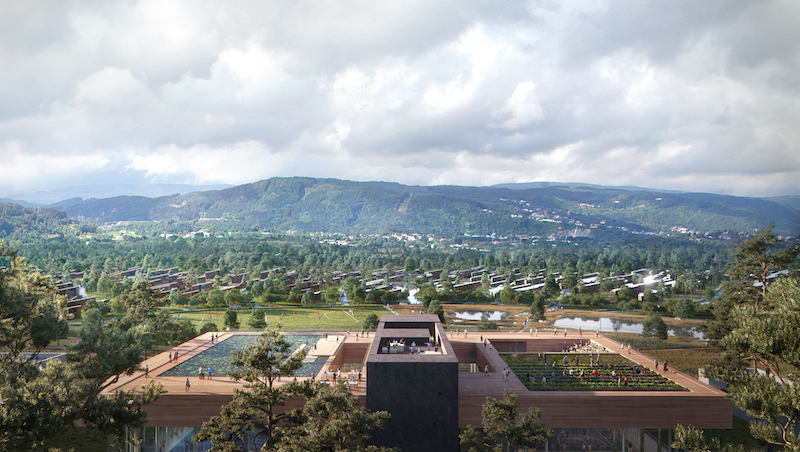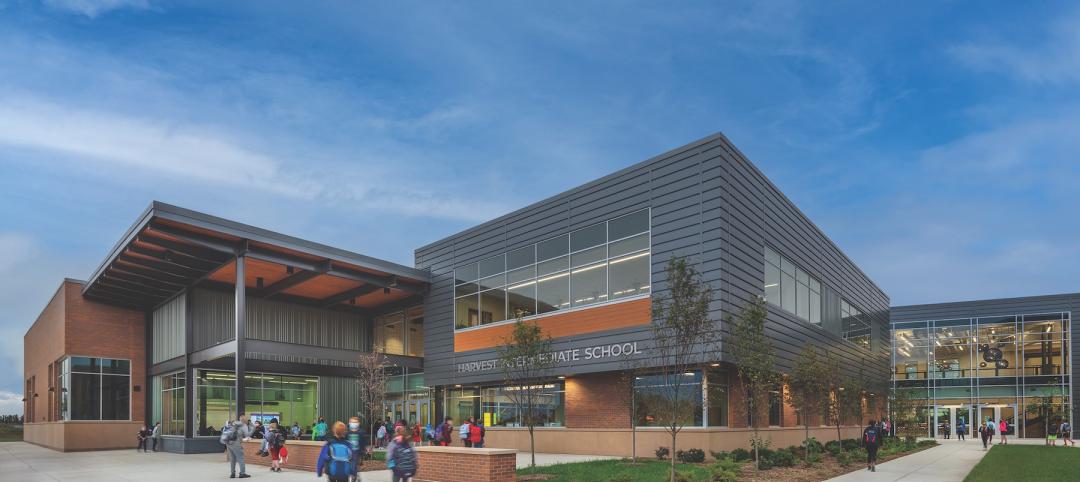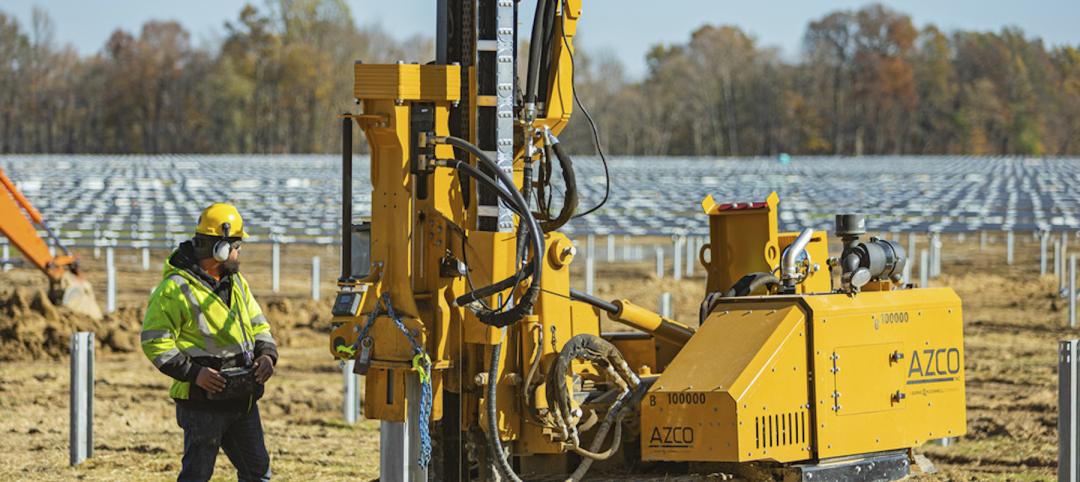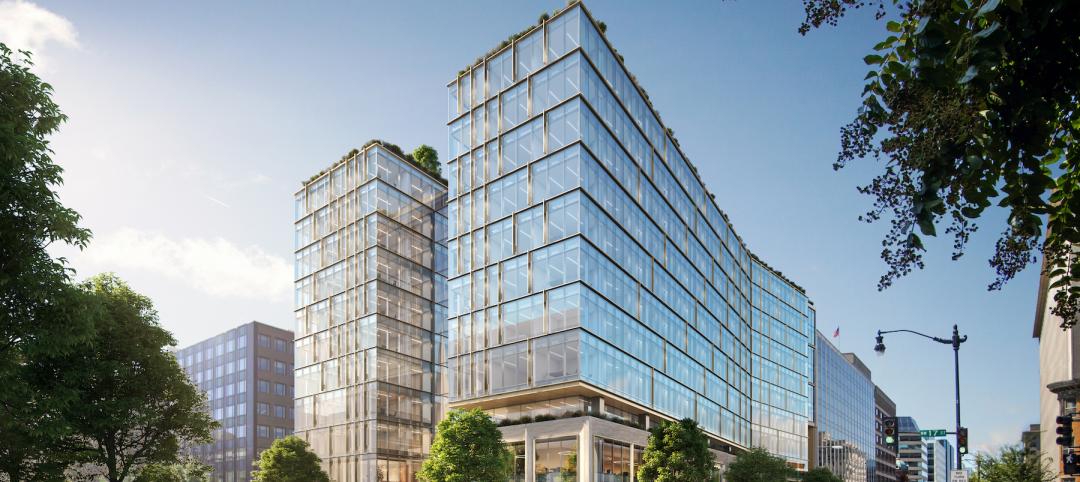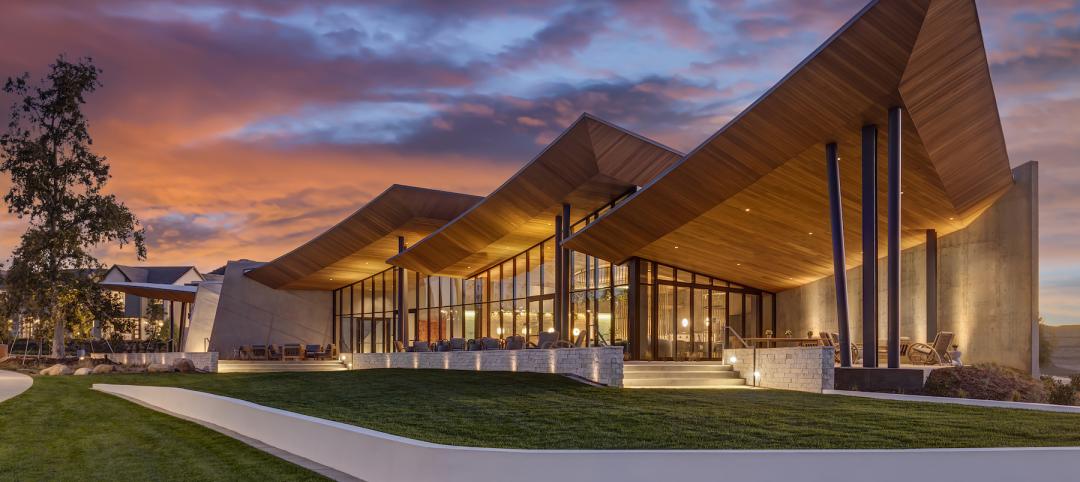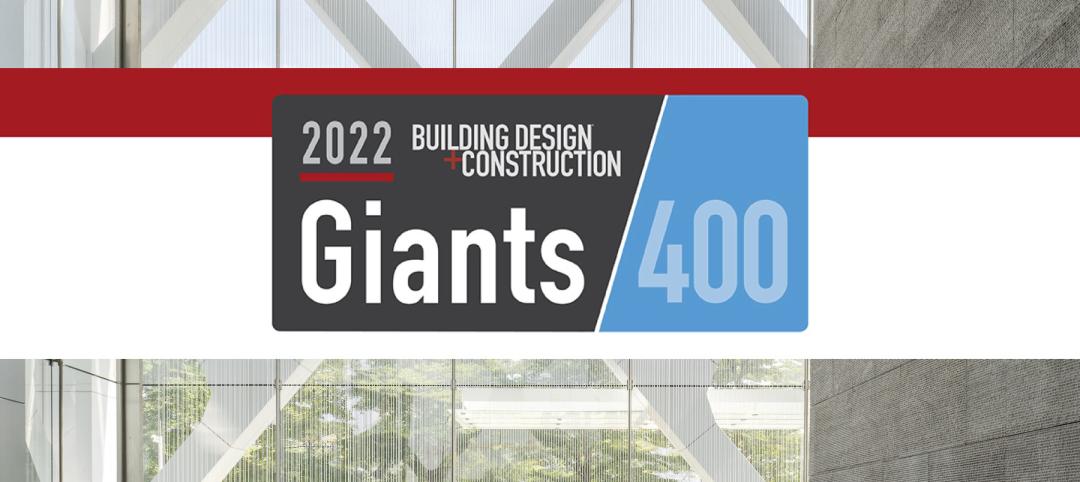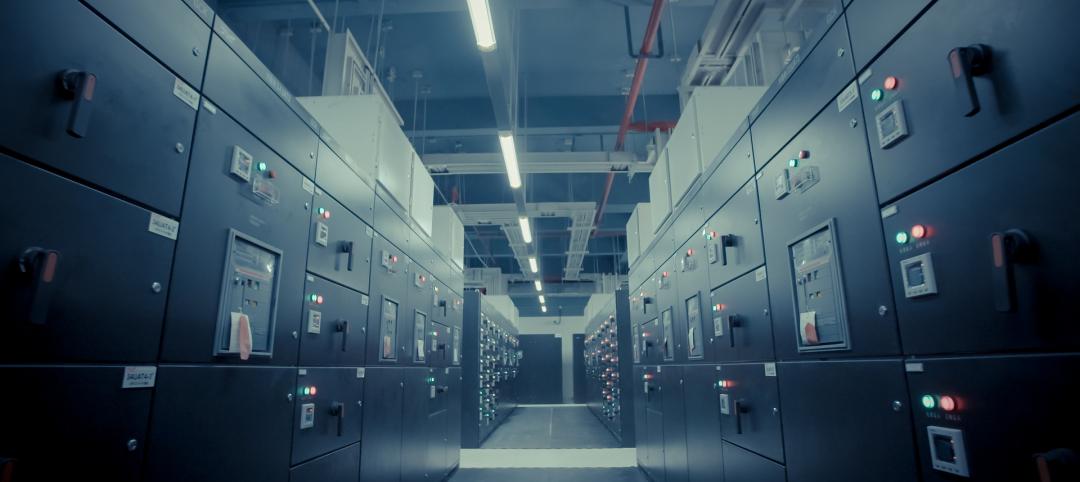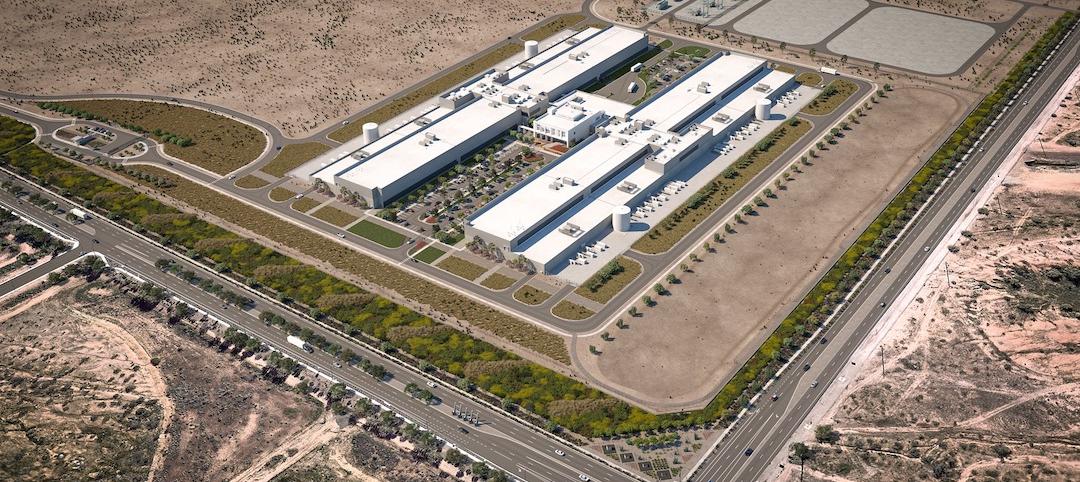A new prototype model for urban data centers, developed by MIRIS in cooperation with Snøhetta, Skanska, Asplan Viak, and Nokia, hopes to help solve the international climate challenge by allowing excess energy from data centers to power cities with up to 18,000 people.
Many data centers are often built in remote places and all of the excess heat they produce is wasted. Considering data centers account for 2% of the world’s total energy consumption, that wasted excess heat is a substantial amount.
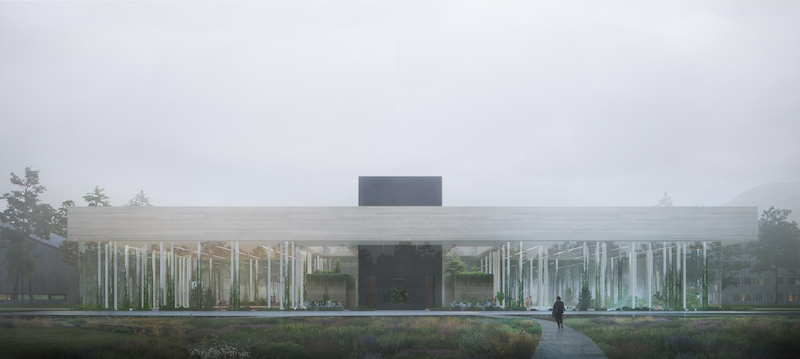 Rendering: Snøhetta/Plompmozes.
Rendering: Snøhetta/Plompmozes.
The new prototype, named The Spark, takes data centers from their remote locales and moves them to the middle of cities, allowing them to provide nearby buildings with energy. Solar panels on the surrounding houses will provide the data center with energy. The study associated with the new concept shows as many as 18,000 people can be supplied with energy this way and data center power consumption can be reduced by up to 40% compared to traditional centers.
See Also: The world’s largest data center is being built 140 miles north of the Arctic Circle
Buildings that require a lot of energy, such as schools and hospitals, will be placed in the city center near the data center while commercial real-estate and homes will be located farther away. A cyclical energy concept where the heat generated from the data center is looped through the city before it is brought back to the center will be used. This allows buildings to be heated in the city and for the data center to be cooled near the end of the cycle.
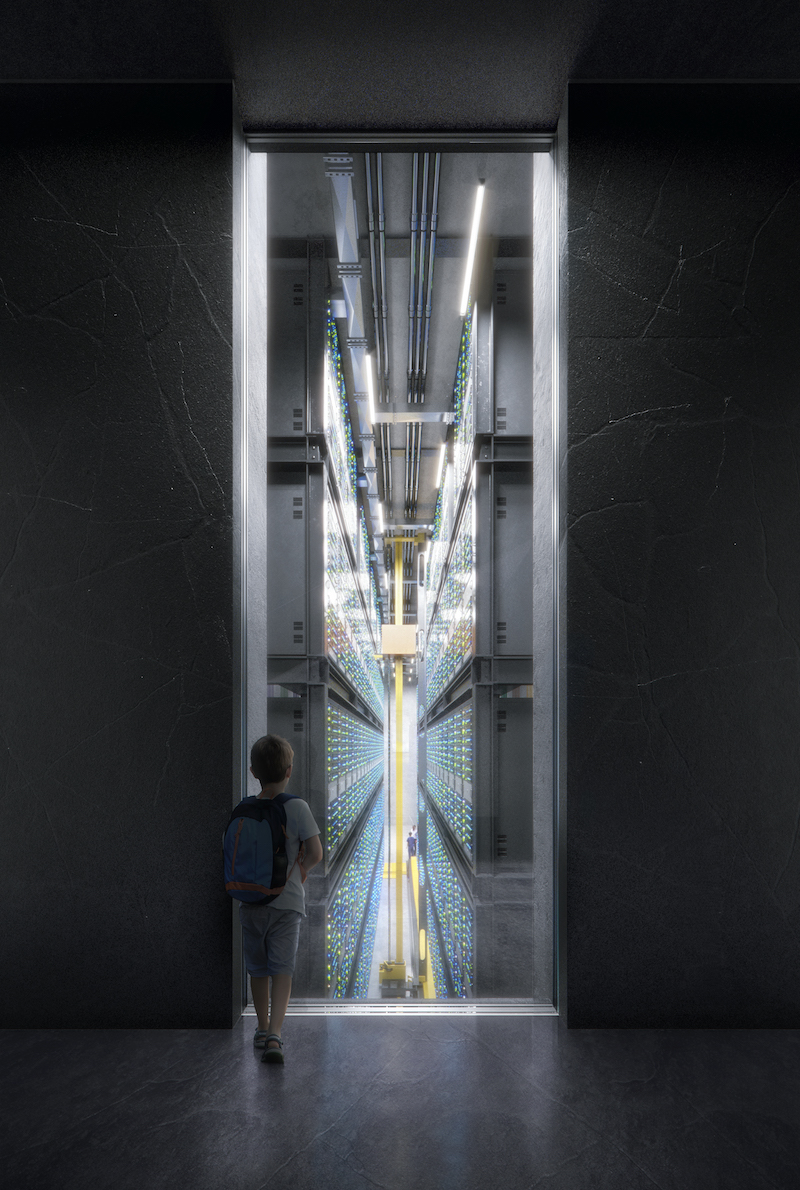 Rendering: Snøhetta/Plompmozes.
Rendering: Snøhetta/Plompmozes.
Lyseparken outside of Os municipality in Norway is being considered as a possible test site for The Spark. If the pilot is launched in this location, Lyseparken will become the first energy positive city in the world, according to MIRIS.
The Spark concept is a natural continuation of the Powerhouse collaboration’s “plus house” concept. A plus house building is an energy producing building that, over a 60-year period, will generate more renewable energy that the total amount of energy that would be required to sustain daily operations and to build, produce materials, and demolish the building. The Spark hopes to be a catalyst to expand the Powerhouse plus house definition to cities as a whole.
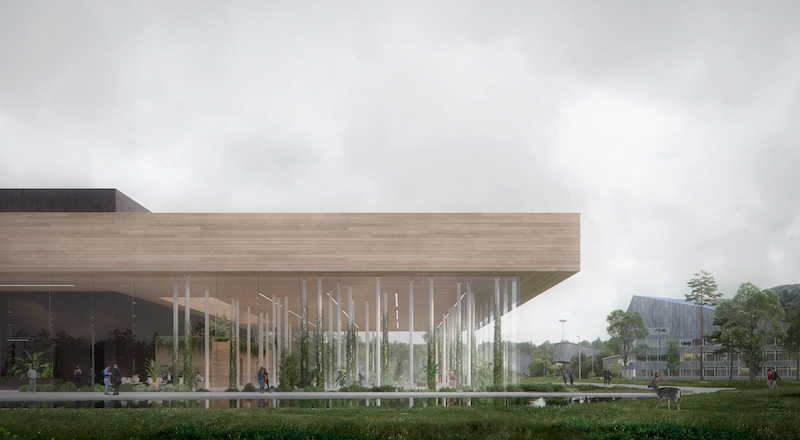 Rendering: Snøhetta/Plompmozes.
Rendering: Snøhetta/Plompmozes.
Related Stories
BAS and Security | Oct 19, 2022
The biggest cybersecurity threats in commercial real estate, and how to mitigate them
Coleman Wolf, Senior Security Systems Consultant with global engineering firm ESD, outlines the top-three cybersecurity threats to commercial and institutional building owners and property managers, and offers advice on how to deter and defend against hackers.
Giants 400 | Aug 22, 2022
Top 90 Construction Management Firms for 2022
CBRE, Alfa Tech, Jacobs, and Hill International head the rankings of the nation's largest construction management (as agent) and program/project management firms for nonresidential and multifamily buildings work, as reported in Building Design+Construction's 2022 Giants 400 Report.
Giants 400 | Aug 22, 2022
Top 200 Contractors for 2022
Turner Construction, STO Building Group, Whiting-Turner, and DPR Construction top the ranking of the nation's largest general contractors, CM at risk firms, and design-builders for nonresidential buildings and multifamily buildings work, as reported in Building Design+Construction's 2022 Giants 400 Report.
Giants 400 | Aug 22, 2022
Top 45 Engineering Architecture Firms for 2022
Jacobs, AECOM, WSP, and Burns & McDonnell top the rankings of the nation's largest engineering architecture (EA) firms for nonresidential buildings and multifamily buildings work, as reported in Building Design+Construction's 2022 Giants 400 Report.
Giants 400 | Aug 22, 2022
Top 80 Engineering Firms for 2022
Kimley-Horn, Tetra Tech, Langan, and NV5 head the rankings of the nation's largest engineering firms for nonresidential buildings and multifamily buildings work, as reported in Building Design+Construction's 2022 Giants 400 Report.
Giants 400 | Aug 21, 2022
Top 110 Architecture/Engineering Firms for 2022
Stantec, HDR, HOK, and Skidmore, Owings & Merrill top the rankings of the nation's largest architecture engineering (AE) firms for nonresidential and multifamily buildings work, as reported in Building Design+Construction's 2022 Giants 400 Report.
Giants 400 | Aug 20, 2022
Top 180 Architecture Firms for 2022
Gensler, Perkins and Will, HKS, and Perkins Eastman top the rankings of the nation's largest architecture firms for nonresidential and multifamily buildings work, as reported in Building Design+Construction's 2022 Giants 400 Report.
Giants 400 | Aug 19, 2022
2022 Giants 400 Report: Tracking the nation's largest architecture, engineering, and construction firms
Now 46 years running, Building Design+Construction's 2022 Giants 400 Report rankings the largest architecture, engineering, and construction firms in the U.S. This year a record 519 AEC firms participated in BD+C's Giants 400 report. The final report includes more than 130 rankings across 25 building sectors and specialty categories.
Data Centers | Feb 15, 2022
Data center boom: How two AEC firms plan to meet unprecedented demand for data center facilities
Ramboll's Jim Fox and EYP Mission Critical Facilities' Rick Einhorn discuss the recent joining of their companies at a time of unprecedented data center demand. BD+C's John Caulfield leads the discussion with Fox, Ramboll's Managing Director for the Americas, and Einhorn, EYP Mission Critical Facilities' Managing Director.
Data Centers | Nov 1, 2021
Construction begins on Facebook’s Mesa Data Center
The project represents Facebook’s first major investment in Arizona.


